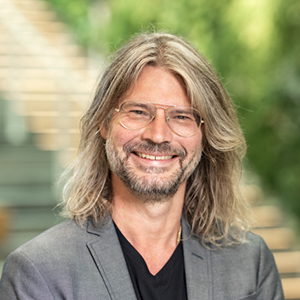At the end of March 2022, the consortium “Innovation by Creative Economy” in which Uppsala University is a partner submitted an application to the EU to run a Knowledge and Innovation Community (KIC) focusing on culture and creative sectors and industries. The call for applications was made by the European Institute of Innovation and Technology.
For individual researchers and teaching staff, the most important thing is that whatever consortium wins this call, billions in EU funding will be spent on various forms of collaborative projects in culture and creative sectors and industries. In short, a KIC is intended to boost an industry by funding various types of knowledge-intensive and innovative collaborative projects to utilise knowledge and create new activities that also require education initiatives.
Opens up new opportunities
 “This will open up new opportunities for the humanities and social sciences – the sky is the limit. If you want to think outside the box and get into contact with people and organisations who think innovatively in their field, you should take a look at this opportunity. It’s a chance to take your research out into the community at large so that the community can benefit from your research results. This is a different type of funding than the regular external research grants that we are used to, and as a researcher and lecturer it can be a real boost to your third stream activities,” says Mattias Martinson, Deputy Vice Rector for the Disciplinary Domain of Humanities and Social Sciences, and responsible for the University’s application process.
“This will open up new opportunities for the humanities and social sciences – the sky is the limit. If you want to think outside the box and get into contact with people and organisations who think innovatively in their field, you should take a look at this opportunity. It’s a chance to take your research out into the community at large so that the community can benefit from your research results. This is a different type of funding than the regular external research grants that we are used to, and as a researcher and lecturer it can be a real boost to your third stream activities,” says Mattias Martinson, Deputy Vice Rector for the Disciplinary Domain of Humanities and Social Sciences, and responsible for the University’s application process.
The funding is intended to help solve challenges to create a better society in the future.
“To pull just one example out of the air, the funding could be for a collaborative project on the topic of democracy with a focus on exhibitions or public art accompanied by education initiatives about democracy and urban development for those who work in these sectors,” Mattias Martinsson speculates. The calls therefore will not be primarily for grants for basic research, but for us as a University it’s more a matter of making good use of research and education in various forms. Job creation, growth, sustainable development and democracy development are important foundations. But there will most likely also be post-doctoral fellowships in various collaborative projects.”
Other positive consequences
But there can also be various forms of positive consequences for applications to Vinnova or Formas, or even for applications for actual research to the Swedish Research Council or the Bank of Sweden Tercentenary Foundation (RJ).
“There is a tendency among researchers to get into a bit of a rut where they publish, apply for new research grants, and publish again, over and over. But it can be beneficial to break that pattern and discuss their results with actors outside academia. Because in those encounters, new ideas can come up – for research as well as for solving society’s challenges. We have a lot of research published in journal articles, but how can it be used to find solutions? This can include anything from patents to study programmes.”
Essential to participate
At the beginning of 2020, we were well behind when it came to complex EU calls for proposals and the capacity of research to participate in these types of applications. But it just isn’t viable in the long-term to not know what KICs are, or not participate in more complex EU funding application processes.
Work on the application for the KIC has been going on for a couple of years, ever since it was decided in November 2019 that a KIC would be announced with a focus on the creative industries, even if the call itself was only published in October 2021.
“When we were asked to join this consortium as a lead partner to apply for a KIC in the creative industries, we took the opportunity to put ourselves on the map.”
The consortium involves some 50 stakeholders who have discussed why they want to apply, what they have to offer that’s special, and how they can maximise the impact of the funds that the KIC will deploy to support collaborative projects.
“At this point, we are satisfied with what we’ve done, even if we have bad luck and it doesn’t end up being our consortium that gets the chance to influence the KIC. Our researchers and teaching staff will still be able to apply for grants for collaborative projects. Perhaps the greatest benefit derived from our work in the consortium is that more and more people – heads of department as well as researchers – are becoming aware of the initiatives that are coming.”
Platform for collaboration
One initiative that has been launched thanks to the work with the application is the platform for third stream activities in culture and creative sectors and industries that is being developed in cooperation with the Innovation Partnership Office.
The platform is intended to be an arena in which internal as well as external actors in the creative industries can meet, discuss, and explore ideas and challenges together (see also the fact box for link to previous article).
“We are currently investigating what would be required to create such a platform. We need to know what the needs are and what interest there is, within the disciplinary domain as well as among external actors. We will then see where that interest and those needs lead.”
International networks
The collaboration within the consortium is also a way of increasing our contacts and demonstrating that Uppsala University is an interesting partner to collaborate with. Work on the application has already opened new doors for international collaborations.
“We have already received requests from Germany and Denmark to participate in networks to do with the creative industries.”
Bigger budget than the ERC
In this context, it is interesting to see how the funding is being allocated within Horizon Europe 2021-2027, the EU’s framework programme for research and innovation. The framework programme has a budget of EUR 95.5 billion in total until 2027.
The framework programme has three parts, or pillars as they are called. The first pillar is Excellent Science with ERC and Marie Skodowska-Curie grants. That pillar gets about 15 per cent of the framework programme’s budget.
The second pillar, Global Challenges and European Industrial Competitiveness, focuses on collaborative projects and societal challenges in quite well-defined areas. The second pillar gets approximately 50 per cent of the framework programme’s budget.
Finally, there is the third pillar: Innovative Europe. This pillar focuses on institutional cooperation for basic research, applied research and for commercialising research results. The KICs are part of the third pillar. And the third pillar gets approximately 30 per cent of the framework programme’s budget.
“The ERC is getting very little money in this framework programme. It is therefore important that we participate in consortia to apply for KICs as well as also applying for grants from the funding in pillar two and pillar three. It’s important for academia and the opportunity to strengthen our third stream task, but also for Sweden to get its fair share of the cake.”
Much deeper collaboration is needed
“In the humanities and social sciences, we often tend to think that third stream activity is about giving a talk or appearing in the media. But that sort of third stream activity is very flimsy if you just stop there. Without this kind of deeper collaboration, where we researchers and teaching staff participate in projects with external actors that aim to meet the challenges in society, the knowledge we have won’t end up being utilised to the full extent that it can be,” says Mattias Martinson.
So when might the first concrete call be announced in the future KIC for culture and creative sectors and industries? At the time of writing, that is not entirely clear, but a decision will probably be made during the second or third quarter of 2022 as to which consortium will be entrusted with developing the KIC. This may mean that calls will be announced during the first half of 2023, and then regularly over a long period.
